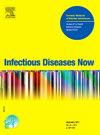The safety profile of fluoroquinolones
IF 2.2
4区 医学
Q2 INFECTIOUS DISEASES
引用次数: 0
Abstract
While they are very useful agents, fluoroquinolones (FQs) are associated with a number of serious adverse effects (AEs). The objective of this paper is to describe the characteristics of frequent serious AEs related to FQs along with their risk factors, their safety in specific populations, and the main drug-drug interactions that may occur. Serious AEs commonly associated with FQs include tendon disorders (particularly tendinopathy and tendon rupture), CNS toxicity (seizure and encephalopathy), peripheral neuropathy (including small fiber neuropathy), cardiovascular toxicity (QT interval prolongation, dissection, and aneurysm rupture), disrupted glucose metabolism, phototoxicity, C. difficile infections, acute renal failure, and hepatic toxicity. Most of these AEs are common to all FQs, but some, such as acute kidney failure on crystallization with ciprofloxacin or norfloxacin, are more specific. Unlike the AEs associated with most other antibiotics, some of these AEs (e.g. tendinopathy or neuropathy) may occur after FQ discontinuation, and others may subsequently progress (e.g. FQ-associated disability). The risk of serious AE is heightened by factors having to do with patient age and comorbidities, the characteristics of the FQ treatment (dose and/or duration) and associated drug intake. To conclude, FQs appear to be associated with a higher risk of serious AEs than most of the other antibiotics available for the same indications, however some AEs can be avoided by bearing in mind the predisposing risk factors.
氟喹诺酮类药物的安全性概况
虽然它们是非常有用的药物,但氟喹诺酮类药物(FQs)与许多严重的不良反应(ae)有关。本文的目的是描述与FQs相关的频繁严重ae的特征及其危险因素、在特定人群中的安全性以及可能发生的主要药物-药物相互作用。通常与FQs相关的严重ae包括肌腱疾病(特别是肌腱病变和肌腱断裂)、中枢神经系统毒性(癫痫和脑病)、周围神经病变(包括小纤维神经病变)、心血管毒性(QT间期延长、夹层和动脉瘤破裂)、葡萄糖代谢中断、光毒性、艰难梭菌感染、急性肾功能衰竭和肝毒性。大多数不良反应是所有fq常见的,但有些,如环丙沙星或诺氟沙星结晶引起的急性肾衰竭,更具有特异性。与大多数其他抗生素相关的不良反应不同,其中一些不良反应(如肌腱病变或神经病变)可能在停用FQ后发生,而其他不良反应可能随后发生(如FQ相关的残疾)。与患者年龄、合并症、FQ治疗的特点(剂量和/或持续时间)和相关药物摄入有关的因素会增加严重AE的风险。综上所述,FQs似乎比用于相同适应症的大多数其他抗生素与严重不良反应的风险更高有关,然而,通过记住易感风险因素,可以避免一些不良反应。
本文章由计算机程序翻译,如有差异,请以英文原文为准。
求助全文
约1分钟内获得全文
求助全文
来源期刊

Infectious diseases now
Medicine-Infectious Diseases
CiteScore
7.10
自引率
2.90%
发文量
116
审稿时长
40 days
 求助内容:
求助内容: 应助结果提醒方式:
应助结果提醒方式:


